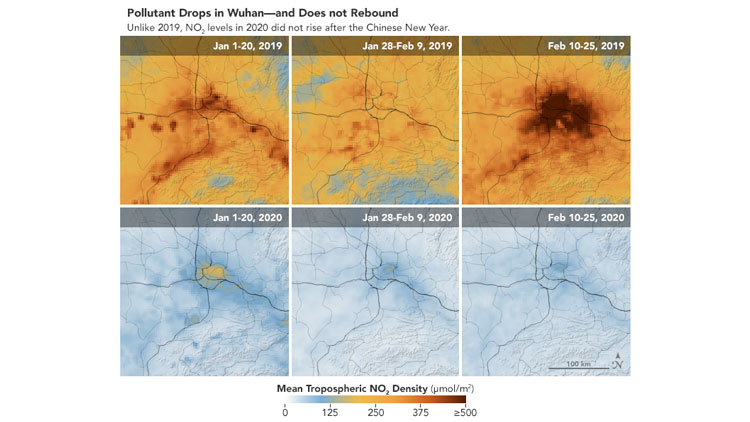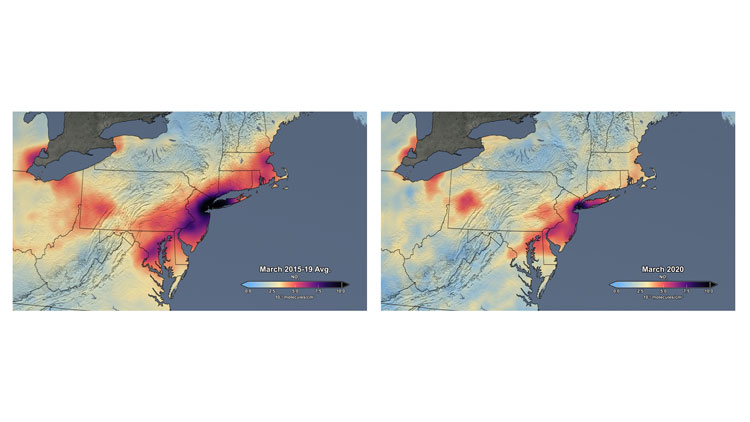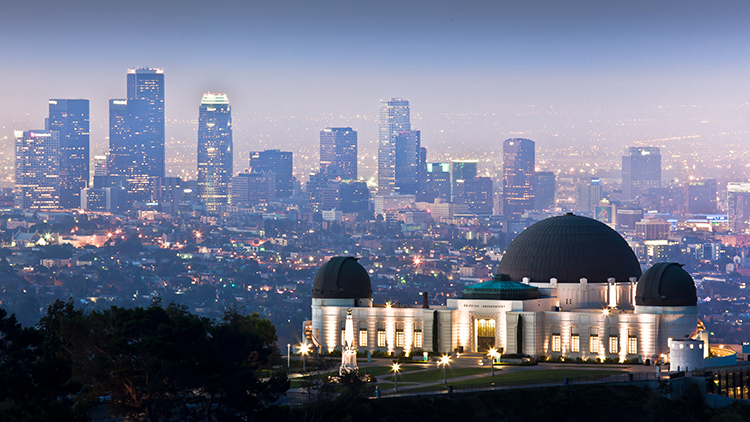
A Dangerous Gas
Nitrogen dioxide (NO2) is a gas that is released into the air when fuel is burned. Emissions from cars, trucks, buses, power plants, and other industrial facilities release nitrogen dioxide. The environmental impact of nitrogen dioxide includes smog and acid rain. Humans suffer from respiratory infections and asthma when exposed to nitrogen dioxide.
What Happened in Wuhan?
Businesses and factories in Wuhan, China always close the last week of January and for a few weeks in February in celebration of the New Year. So there is always a little less air pollution during this time. But as Wuhan, China battled the COVID-19 outbreak in January and February, people stayed put. Cars, trucks, buses, and factories were still. A temporary environmental benefit was a significant drop in air pollution over China, starting in Wuhan and spreading across the country. The drastic reduction in the levels of nitrogen dioxide over China could be seen from space!
So, What’s the Big Deal?
Scientists observed once the quarantine ended and people returned to work, the levels of nitrogen dioxide in the air increased. While only temporary, this brief pause in human activity showed just how big our impact is on the environment. While we can’t stop working and traveling, we can make changes. Laws designed to limit harmful emissions from factories and alternative fuel sources are just two ways we can reduce our impact on the environment.

Here at Home
Once COVID-19 spread to the United States, the governors of many states asked people to stay home from work and school. A similar phenomenon was observed in the Northeast. The levels of nitrogen dioxide in the northeast decreased, especially over New York City.
What Do You Think? How have stay-at-home orders impacted your travel habits?
Photo Credit: (t)NASA Earth Observatory, (b)NASA



